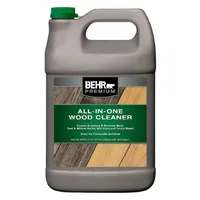5 tips to keep your deck looking great all summer
Keep your deck looking spiffy through September
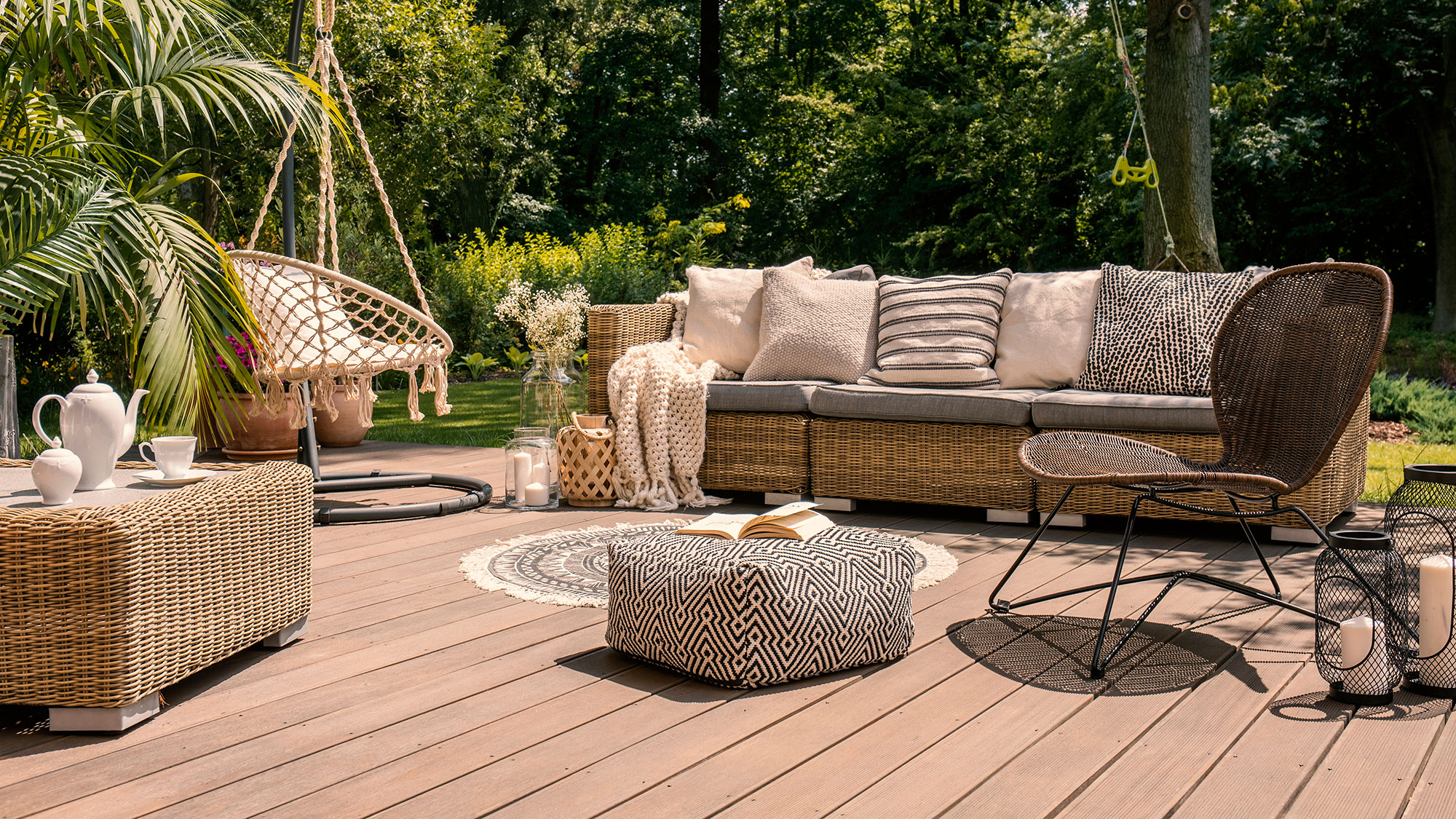
With warmer weather and vacation season upon us, now is the time to ensure your backyard is ready for summer entertaining. Besides improving your lawn and knowing how to make your grass look greener, it's never too late to freshen up your deck.
The deck is one area that sees a lot of activity in the summer. It is a popular space to enjoy social gatherings with friends and family and provides a tranquil spot for quiet relaxation. However you use your deck, it will need some care and attention so you can get the most out of your backyard during the summer season.
After months of cold and wet weather, your deck probably looks far from pristine. Winter dirt, mildew, and mold can build up on the surface. Apart from making it look grubby, this can damage the wood, causing it to deteriorate and rot. So, giving your deck a quick sweep to tidy it up might not be enough.
We spoke to Jimmy Englezos, senior brand manager at Ronseal, to hear his expert tips on smartening up your deck.
1. Inspect your deck for wood damage
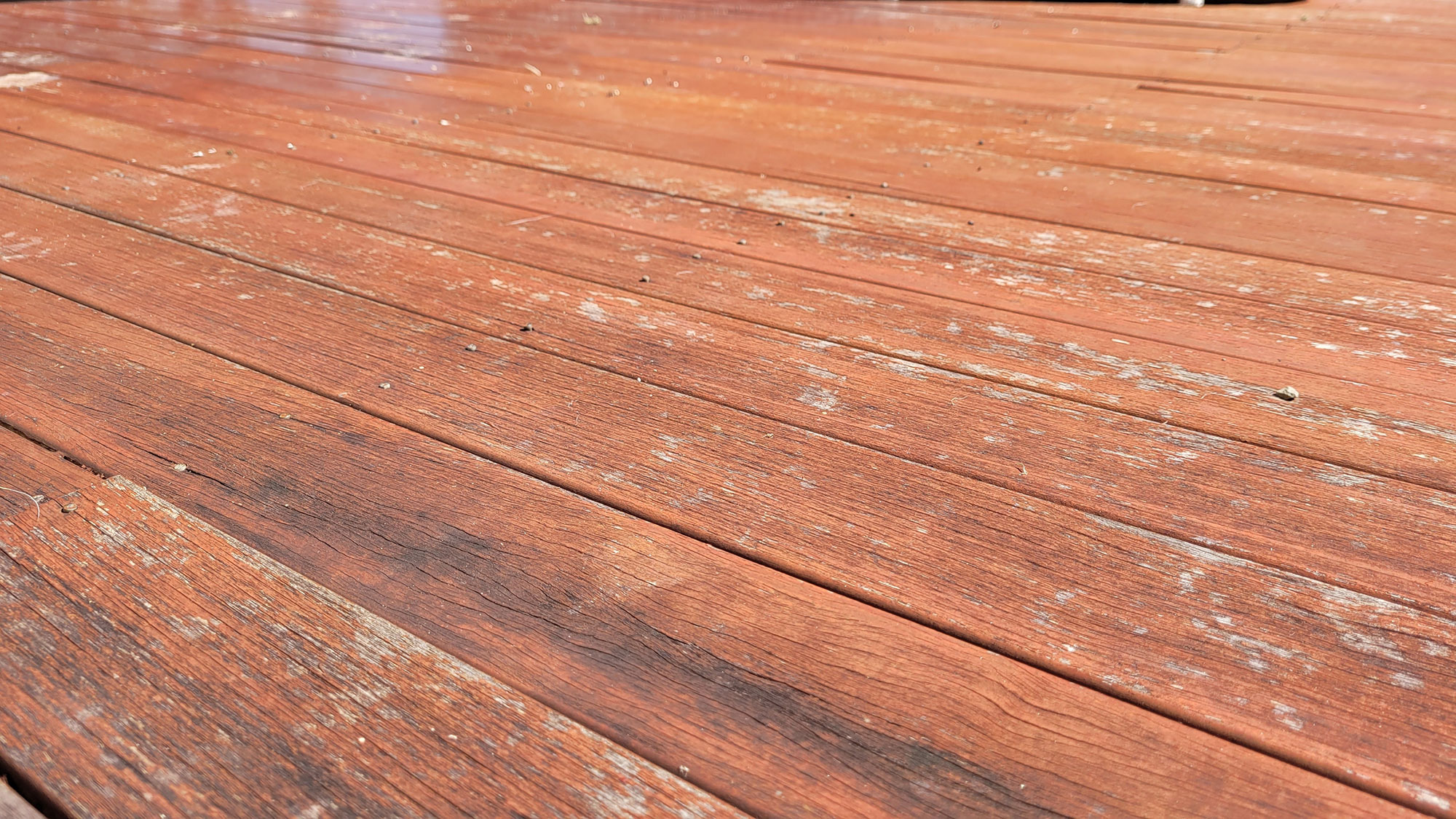
Before you do anything else, Englezos recommends inspecting your yard for winter damage, looking for any impact storms have caused. “Key signs of wood damage include spots of darkened wood, a cracked appearance that may even crumble when you touch it, as well as visible fungus,” he says.
You can also tell if the wood is damaged by touch. “Damaged wood may appear soft and feel damp, it may also have shrunk due to consistent damage, and you may even be able to smell a damp, musty smell.”
Once you have checked your deck and diagnosed any problems, you can fix any damage.
Get instant access to breaking news, the hottest reviews, great deals and helpful tips.
2. Use a deck cleaner
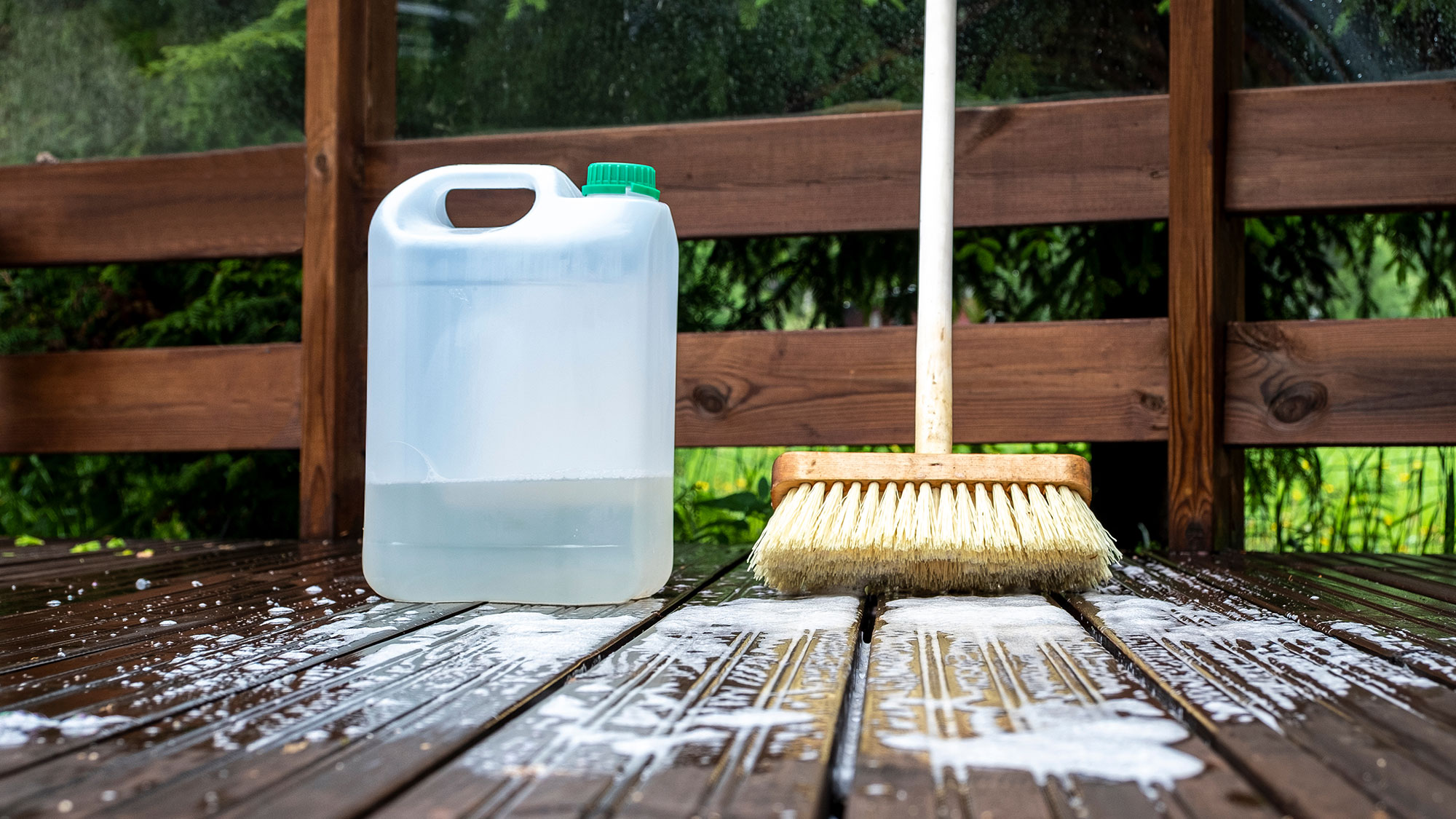
If your deck has been left untouched since the winter, it will need a good sweep before it's cleaned. “It’s best to use a stiff brush to remove dirt, grime and any mould that may be settled on your decking,” says Englezos. “A good clean of the decking will remove any accumulated dirt and prepare the surfaces for cleaning.”
Once the debris has been removed, he recommends using a specialist deck cleaner, such as Ronseal's own Deck and Wood Reviver, to brighten your decking and clean away mould and mildew. Check before you use any product and follow the manufacturer’s instructions before application.
How to clean your decking
1. Move any pots and furniture off the deck surface and cover nearby plants.
2. Using a soft-bristled brush, sweep away any excess dirt and debris.
3. Pour the decking cleaner directly onto the surface and scrub using a clean brush.
4. Leave the cleaner to work for 15-20 minutes (depending on the application instructions) to lift off the dirt.
5. Using a pressure washer on a low setting, rinse off the entire decking surface to completely remove the solution.
Behr All-In-One Wood and Deck Cleaner (1 gallon): $11 @ Home Depot
This deck cleaner cleans and brightens wood surfaces, transforming old, dirty, mildew stained wood surfaces into clean wood ready to stain or finish. This 1 gallon container will clean up to 400 sq ft.
3. Pressure wash with care
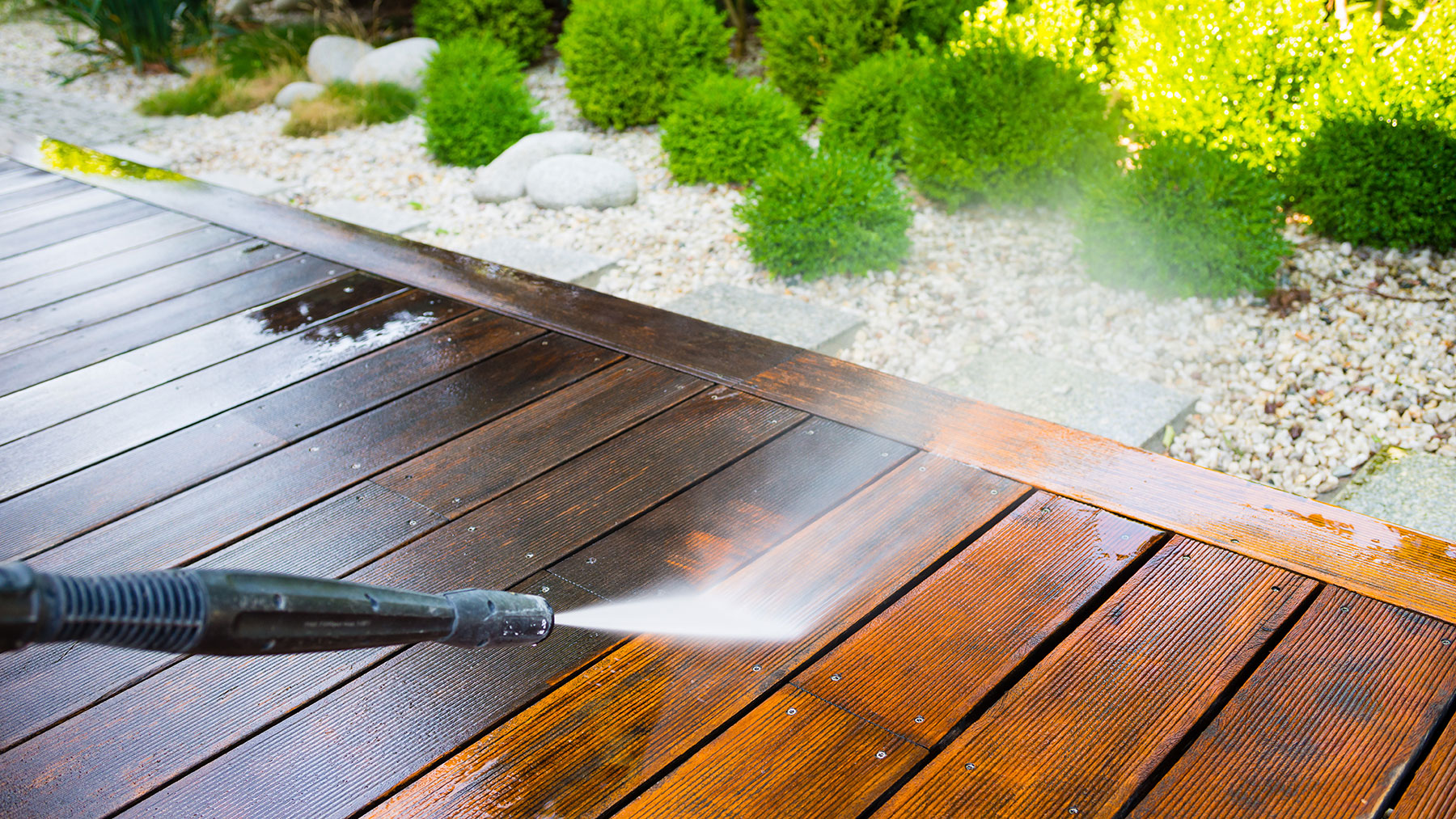
Although a pressure washer can be used to clean your deck, it must be used carefully. Engeloz warns if not, it could damage the wooden fibres. “If the decking is already slightly splintered the pressured water can cause even greater damage, splitting the deck further or chipping off more pieces. A low-pressure setting of around 110 Bar, or 1,500 PSI, should be used.”
He also recommends choosing a low setting and keeping the nozzle at least 6 inches from the surface. “The best way to use the pressure washer is to start at one side of the deck and follow the grooves over to the other side,” he explains.
Engeloz also shares another piece of advice about the water pressure to avoid a patchy finish on your deck. “Make sure you are happy with the water pressure before cleaning the entire decking, as if you change the pressure throughout you will end up with different finishes across the decking,” he says.
4. Avoid cleaning your deck with bleach
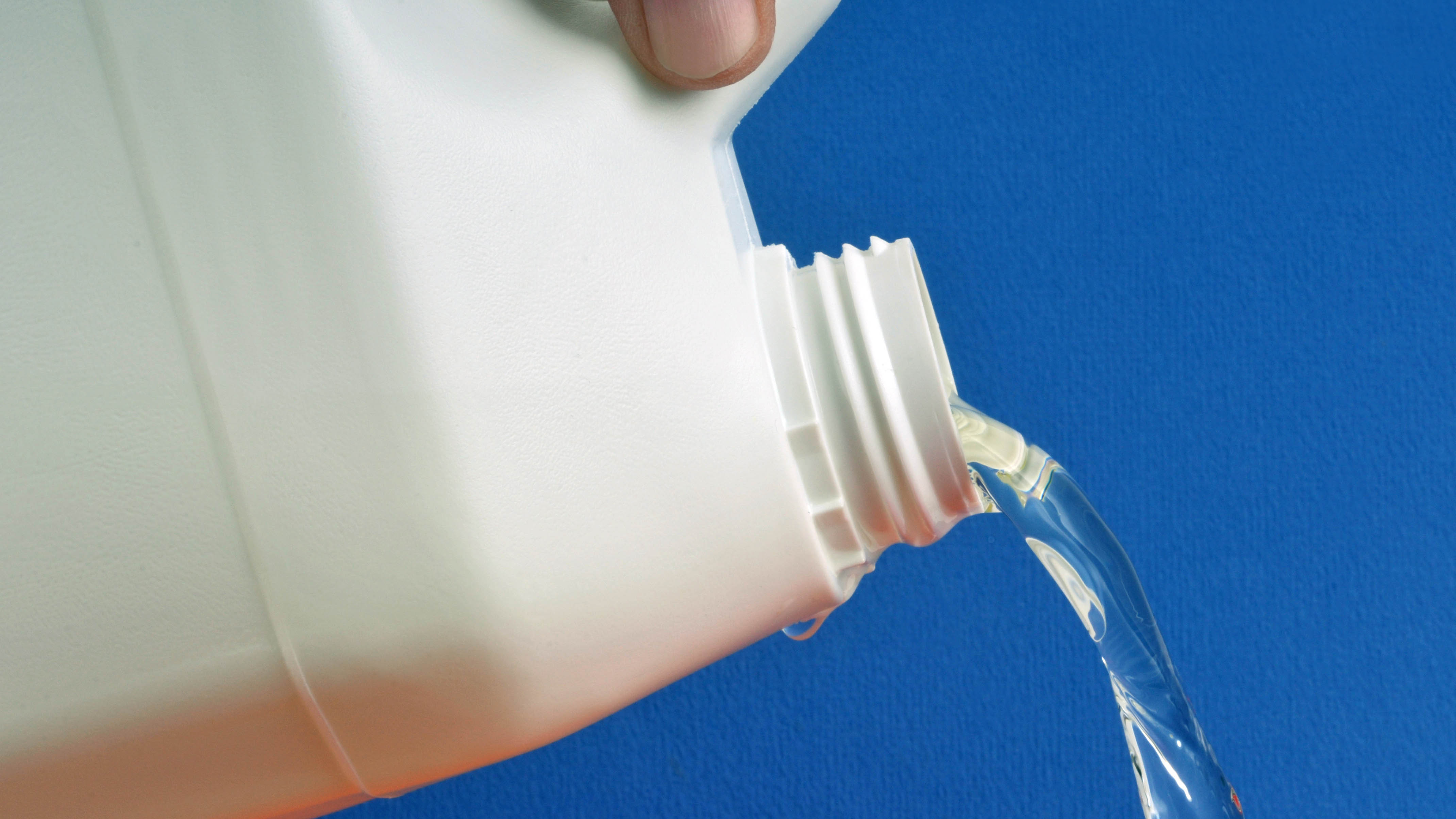
While bleach is often used to clean deck, Englezos advises against it. “The bleach corrodes the metal fasteners, screws and nails, causing them to rust at first and then weaken. Bleach can also damage the surface of composite decking, causing it to discolor and possibly chip,” he says.
Apart from also causing harm to nearby plants, bleach won’t remove mold and mildew growth.
5. Try baking soda and white vinegar
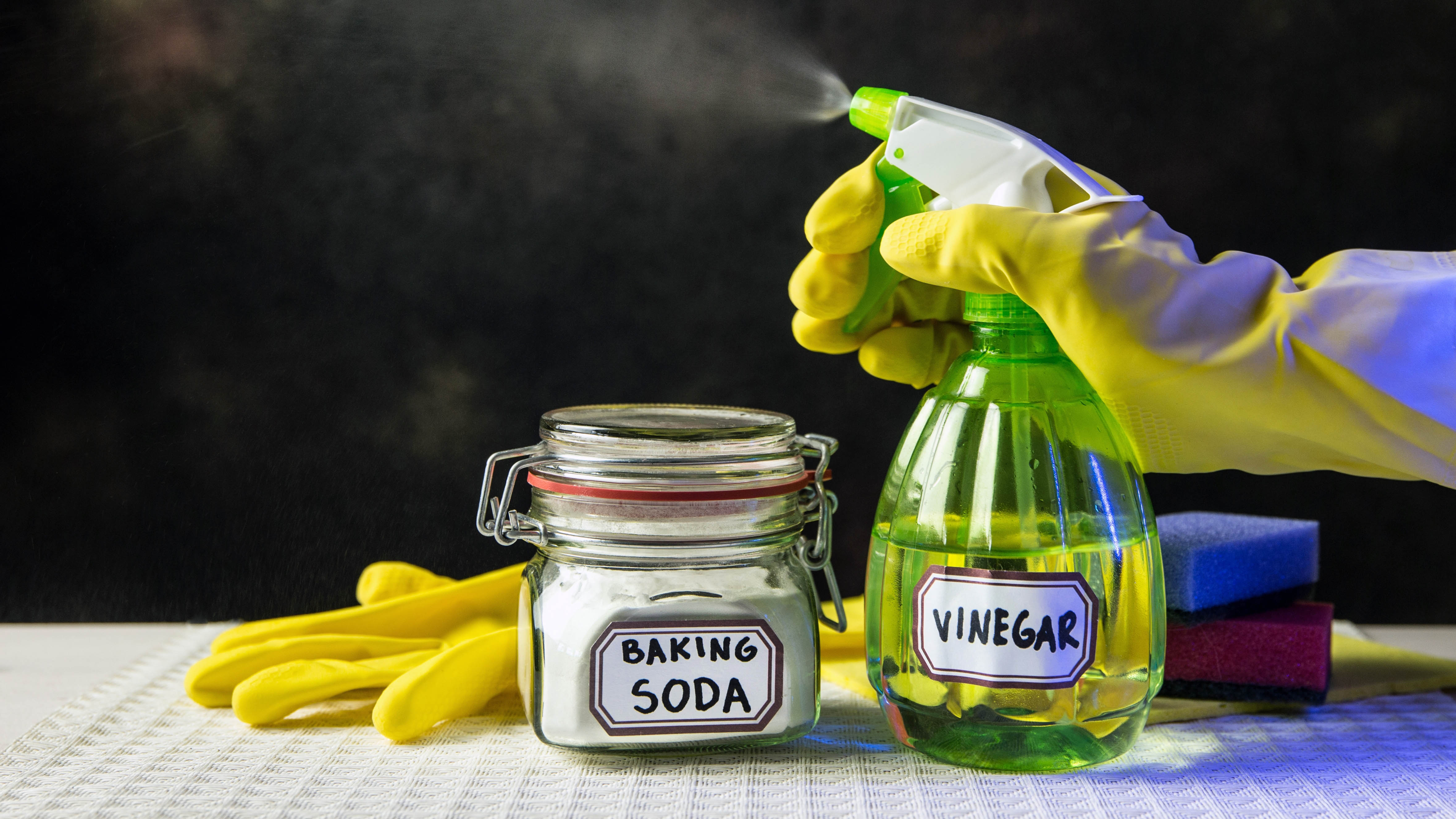
Englezos recommends using a regular cleaning staple instead of bleach. Bicarbonate of soda and white vinegar are cheap products that can be purchased at your local grocery store for a couple of dollars.
“This method is perfectly suitable for both natural wooden and composite decking surfaces as it helps remove mould and mildew that may have built up over winter,” he says, “just make sure to thoroughly mix the vinegar with plenty of water.”
The cleaning method couldn’t be easier, as Englezos explains, “Simply sprinkle some bicarbonate of soda across the decking surface before mixing one cup of vinegar into a bucket of warm, but not boiling water. Dip the bristles of a soft-touch brush into the solution and gently scrub the deck’s surface.”
The bicarbonate of soda will react with the diluted vinegar, helping to remove any stains, mildew and mold. Then, thoroughly rinse the deck using a pressure washer or garden hose.
Top tip
If you don’t have any bicarbonate of soda or white wine vinegar in your store cupboards, swap it for powdered washing detergent. Apart from being a product you can use to clean your patio, it can also be replicated for your deck. Dissolve a scoop in a bucket of warm water to create a cleaning solution, and then using a soft-bristled brush, scrub your deck back and forth to remove dirt, mildew, and mold. When clean, rinse as above.
More from Tom's Guide

Camilla is the Homes Staff Writer and covers everything to do with homes and gardens. She has a wealth of editorial experience, mounting over 30 years, and covers news and features, tests products for reviews and compiles buying guides.
Her work has appeared in business and consumer titles, including Ideal Home, Real Homes, House Beautiful, Homebuilding & Renovation, and Kitchen & Bathroom Business. She’s even appeared on the cover of Your Home, writing about her own house renovation.
Although she’s obsessed with decorating her home, she also enjoys baking and trying out the latest kitchen appliances. But when she’s not inside, you’ll find her pottering about in her yard, tending to her vegetable patch or taking in her prized hydrangeas.
